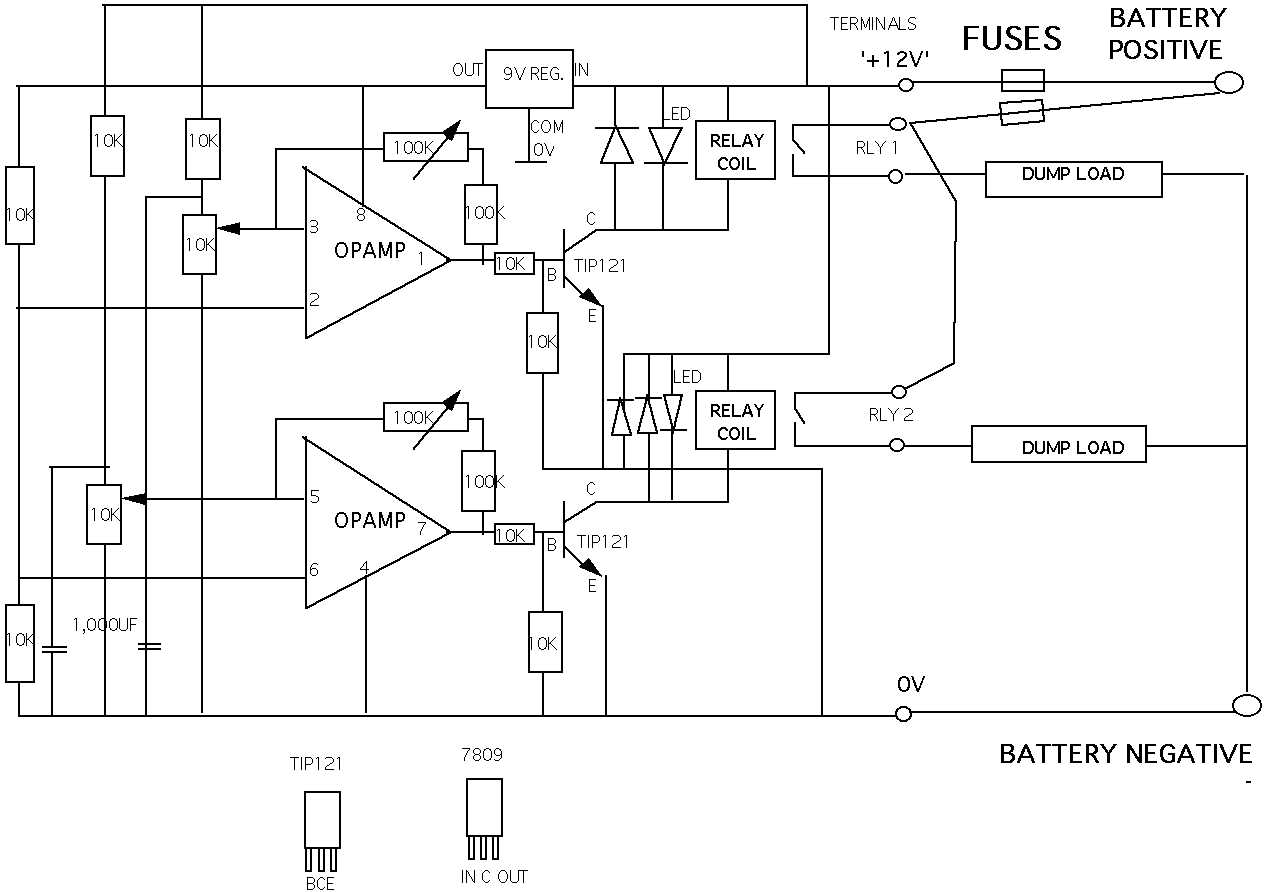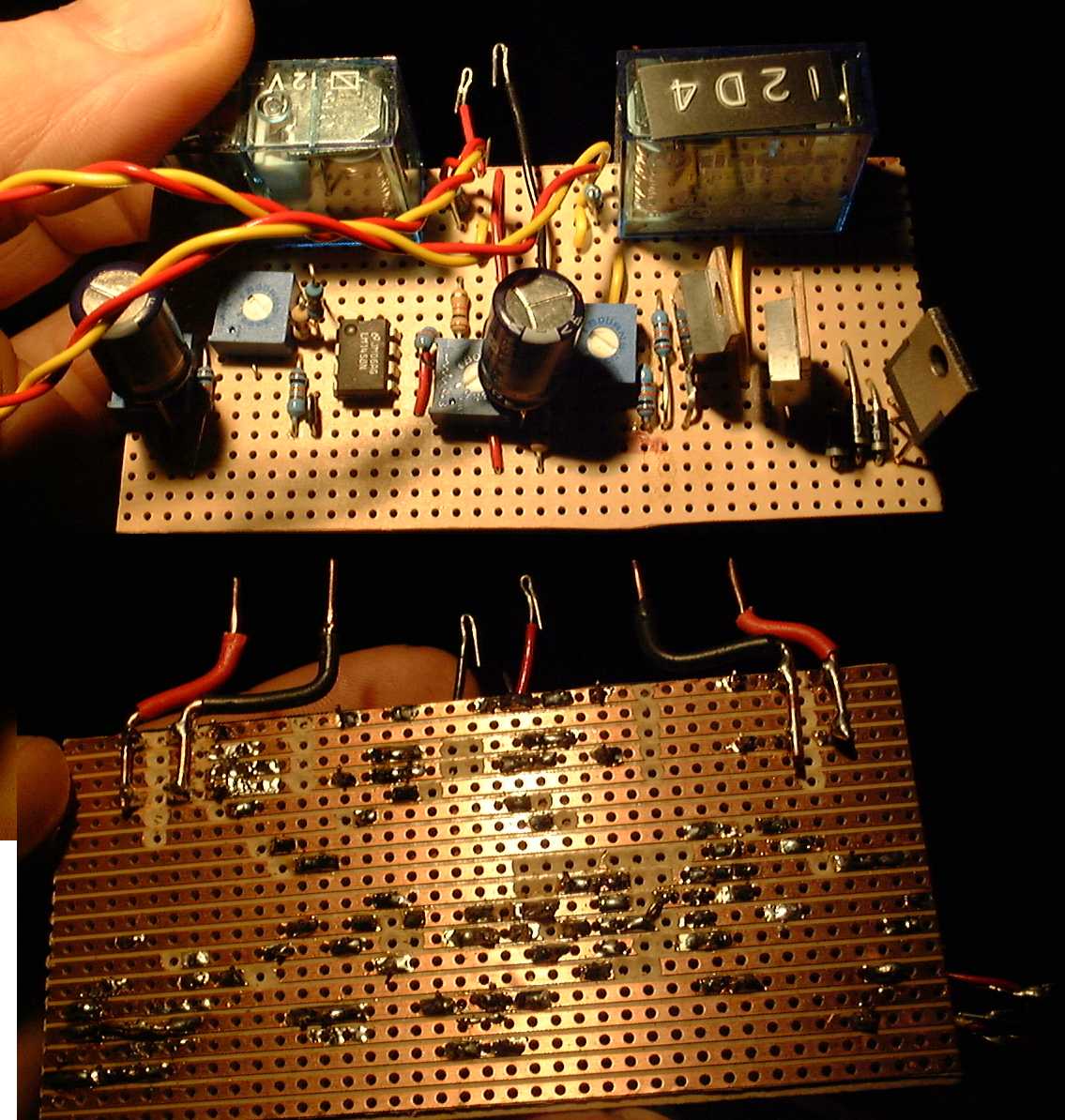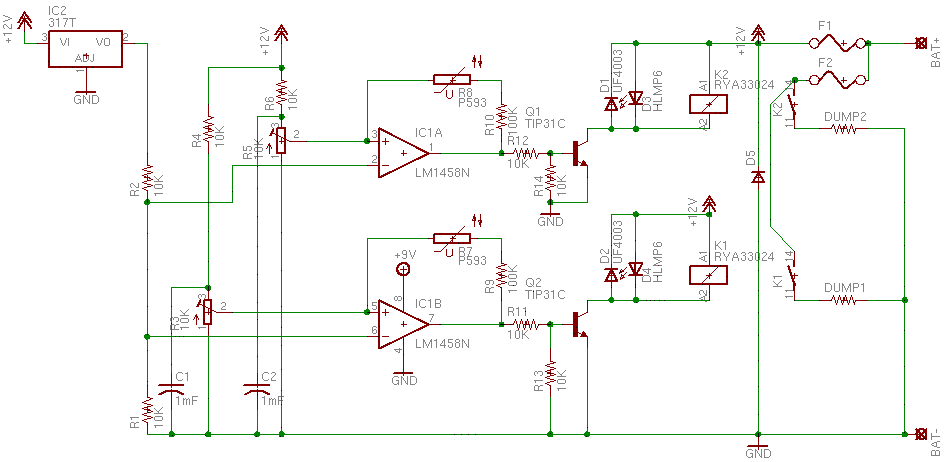Charge control with relays
Battery Charging
Lead acid batteries should be kept in a charged condition. In the
case of a wind powered system, you may have to wait for a wind to
charge
the battery. But be careful not to discharge the battery too
deeply,
or to keep it too long in a discharged state, or it will be damaged
(sulphated)
and become useless. Stop using a battery before it is fully
discharged.
If there is a problem with the wind generator, then charge the battery
from another source within two weeks.
Charging the battery too hard will also damage it. At first,
when
the battery is discharged, it is safe to use a high current, but later
the current must be reduced or the battery will overheat and the plates
will be damaged. The best way to fully charge a battery is to use
a small current for a long time.
There are simple electronic circuits which can regulate the battery
voltage automatically. This ensures that they are charged at the
optimal rate. They are called 'low voltage disconnects' and
'shunt
regulators'.
See also my more recent comments on this in my FAQ
You can find a good commercial charge controller here.
It uses high speed switching and pulse-width modulation with
transistors.
Here is a homebuilt version that works well for me.
Shunt Regulator (Load switching switching charge controller)

List of components required
IC dual opamp LM1458
Voltage regulator 9V100mA
2 x Transistor TIP121 or 120
2 x Preset potentiometer 10K cermet
2 x Preset pot 100K cermet (actually 500k gives more range of
adjustment
for the feedback potentiometer)
6 x Resistors 10K 0.25W
2 x Resistors 100K 0.25W
2 x Resistors 1K 0.25W (in series with LEDs if necessary)
4 x Diodes 1A
2 x Indicators LED 12V
2 x Capacitors 1000uF 16V
2 x Relays 12V 16A

Some knowledge of electronics will be required to build one of these
circuits.
Connect +12V to battery positive (directly on its own wire. A thin
wire
will do) and 0V to battery negative in the same way. These wires
detect the voltage. They will draw a small current, less than 1/2
amp.
Connect heating loads to the system through the relay contacts, so
that
the relays can switch them on and off. Choose suitable loads
which
are each around half of the wind generator maximum output.
Here is another rendering of the circuit which may be more clear for
some readers. Thanks to Tim Burke <[email protected]>



